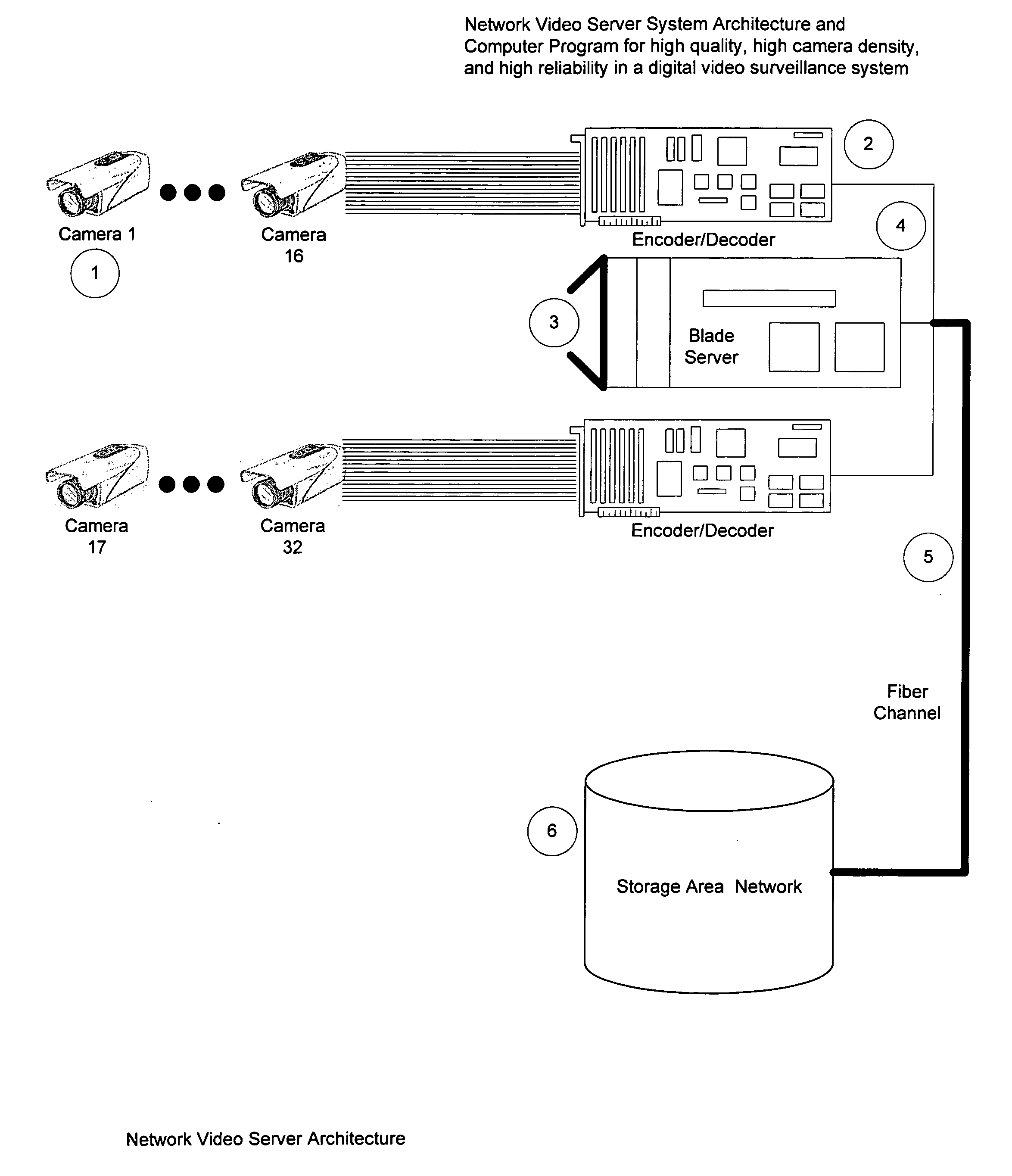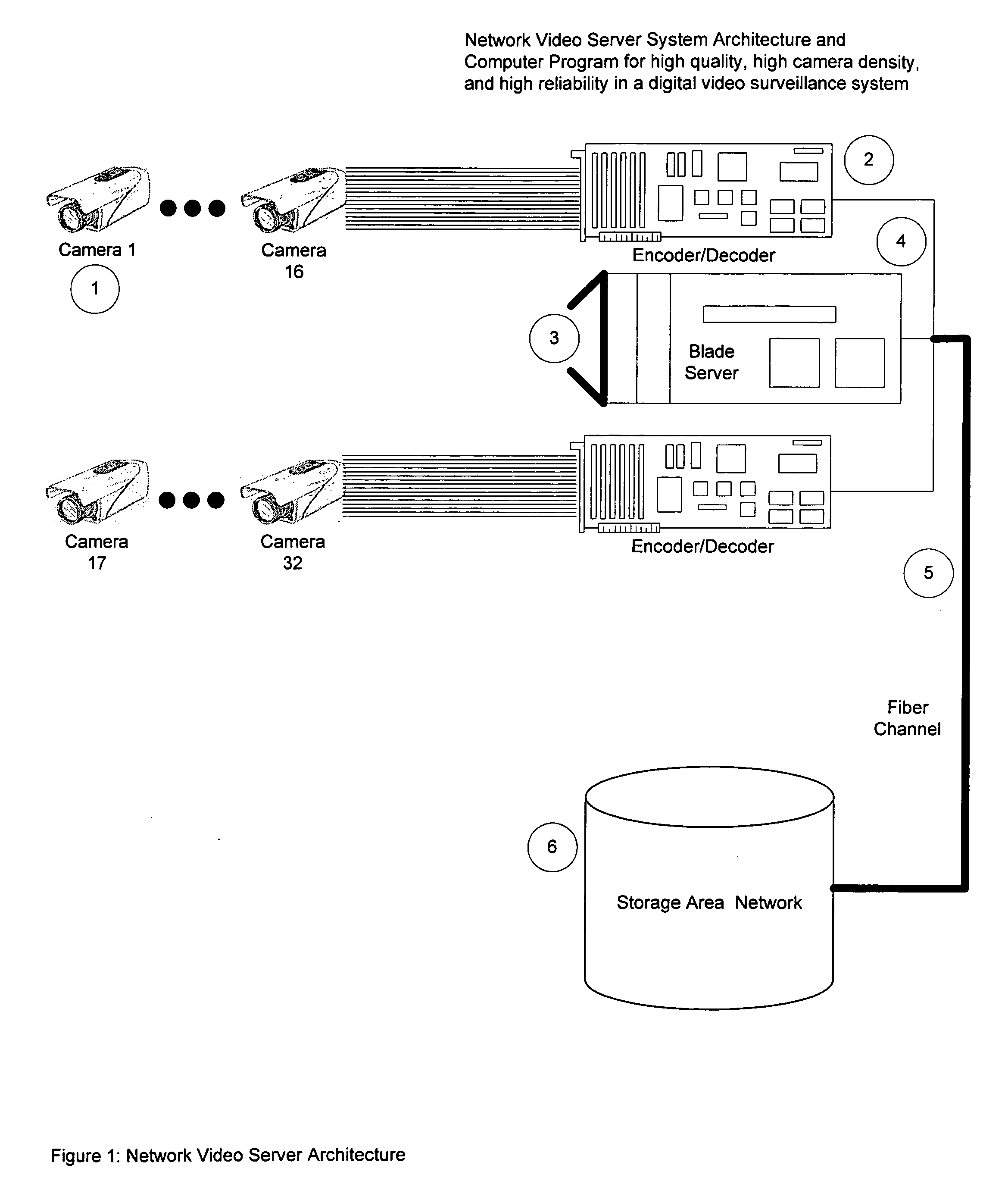Network video server architecture and computer program for high quality, high camera density, and high reliability in a digital video surveillance system
a video server and network video technology, applied in the field of network video server architecture and computer program for high quality, high camera density, and high reliability in a digital video surveillance system, can solve the problems of low video quality, limited video quality in dvr systems, and large file size, and achieve the highest camera density, easy scaling, and maximum video quality
- Summary
- Abstract
- Description
- Claims
- Application Information
AI Technical Summary
Benefits of technology
Problems solved by technology
Method used
Image
Examples
Embodiment Construction
[0036]The Network Video Server architecture is shown schematically in FIG. 1. The Network Video Server software is hosted on Blade Servers housed in a BladeCenter chassis. DataCom's first innovation was to attach two DataCom-proprietary hardware compression and encoder / decoder cards in vibration-proof side-cars to the Blade Server Chassis's PCI-X bus. The DataCom encoders / decoders use the latest H.264 compression standard. By coupling the encoders / decoders directly to the Chassis's bus, the Network Video Server is able to offload all compression to hardware. The DataCom encoders / decoders communicate directly with the server's file system. The Network Video Server software, hosted on the Blade Server, is tasked only with directing the captured video to the appropriate storage volume. Because the Blade Server is not tasked with the processor-intensive hardware compression, and because the Blade Server uses a high-speed processor, the Blade Server processor utilization is held to 10% o...
PUM
 Login to View More
Login to View More Abstract
Description
Claims
Application Information
 Login to View More
Login to View More - R&D
- Intellectual Property
- Life Sciences
- Materials
- Tech Scout
- Unparalleled Data Quality
- Higher Quality Content
- 60% Fewer Hallucinations
Browse by: Latest US Patents, China's latest patents, Technical Efficacy Thesaurus, Application Domain, Technology Topic, Popular Technical Reports.
© 2025 PatSnap. All rights reserved.Legal|Privacy policy|Modern Slavery Act Transparency Statement|Sitemap|About US| Contact US: help@patsnap.com



